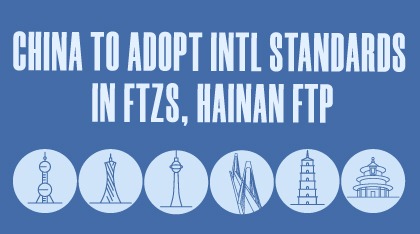
While the boom in artificial intelligence is ushering in new job opportunities, experts are cautioning that it will also bring short-term pain and change for some skilled workers and professionals.
At the end of last month, China released a guideline that aims to promote high-quality and sufficient employment. It requested that authorities at all levels "actively respond to the impact of the rapidly developing emerging technologies, such as artificial intelligence, on employment".
Ni Ying, China head of the multinational human resources company The Adecco Group (TAG), said he was excited to learn about the guideline. "It is the first time that the central government has associated AI with the job market," Ni said. "This will help companies of our kind to expand our vision, reminding us to explore new opportunities while addressing challenges brought by the rapidly evolving technologies."
The Chinese job market has good prospects for candidates already armed with AI know-how.
According to the Chinese recruitment portal Zhaopin, employment vacancies for experts specializing in language processing related to large language models (LLMs) increased by 111 percent year-on-year in the first six months of this year.
The number of job openings for people with robot algorithm and deep-learning skills were up 76 percent and 61 percent respectively during the same period.
The leapfrog in development that AI technology has made over the past two years is undoubtedly the reason for the surging demand for such talent, experts from Zhaopin said.
The overall demand for AI talent has been on the rise in China. Market consultancy McKinsey & Company estimates that China will need 6 million professionals with proficient AI knowledge by 2030, which is six times the number in 2022. However, the talent gap may be as high as 4 million by that time.
But AI, like all the other technologies, is a double-edged sword. While some candidates are highly sought after thanks to their AI knowledge, others may find the emerging technology a threat to their job security.
Finance, audit, tax, translation, and banking positions will be the most affected by AI, said Guo Sheng, CEO of Zhaopin.

Hiring affected
The adoption of LLM has already affected hiring in customer services and operations in China, which was down 2 percentage points in the first half of this year compared with the same period in 2022, said Hu Jiayin, assistant professor from the National School of Development at Peking University.
LLM's impact on sales and business development was greater still, cutting job opportunities by 5 percentage points in the first half of the year.
Even professionals specializing in software and hardware development are not immune. Hiring for these skilled professionals was down by 1 percentage point in the first half of the year due to the spread of AI, said Hu.
The AI boom's impact on the job market is different from other advances in technology, said Peta Latimer, president of international human resources service provider Mercer in Asia.
While blue-collar workers were the most vulnerable during the previous technology revolutions, white-collar workers and professionals will be affected the most by AI, the first time in history this has happened.
Ni from TAG predicts about 20 percent of the current head count in offices can be replaced by machines or other automated solutions. While it is quite easy to determine the jobs that are replaceable, it is still unclear what new employment opportunities can be created for these office personnel in the near term, he said.
But one thing is certain, more people will be working in the service industry when technology proliferates further, said Ni.
Japan may serve as a good reference. While it is one of the most automated countries in the world, the unemployment rate has remained low for years. The large and highly diverse service sector in Japan has provided plenty of job opportunities, Ni added.
Japan deployed about 397 robots per 10,000 employees in 2022, making it the fourth-largest automated country in the world, following South Korea, Singapore, and Germany, according to the International Federation of Robotics.
Japan's unemployment rate was 2.6 percent in 2022, down 0.2 percentage points from a year earlier, according to its Ministry of Internal Affairs and Communications.
China has rapidly caught up in automation in recent years. It was fifth in the IFR rankings, using 392 robots per 10,000 employees in 2022. IFR experts defined China as having "high robot density", especially given that the nation still has a large manufacturing industry workforce.
But, it should also be noted that China's urban employment rate was 5.6 percent in 2022.
The large service sector in Japan may be one reason for the disparity. Tertiary industry's contribution to Japan's GDP was around 75 percent in 2022, while China's was 53.3 percent the same year. Though the service industry's contribution to China's GDP rose to 54.6 percent last year, there is still room for growth, Ni said.






